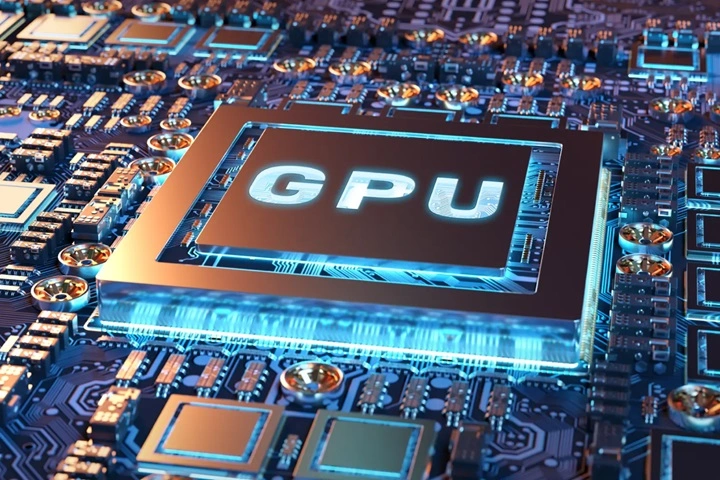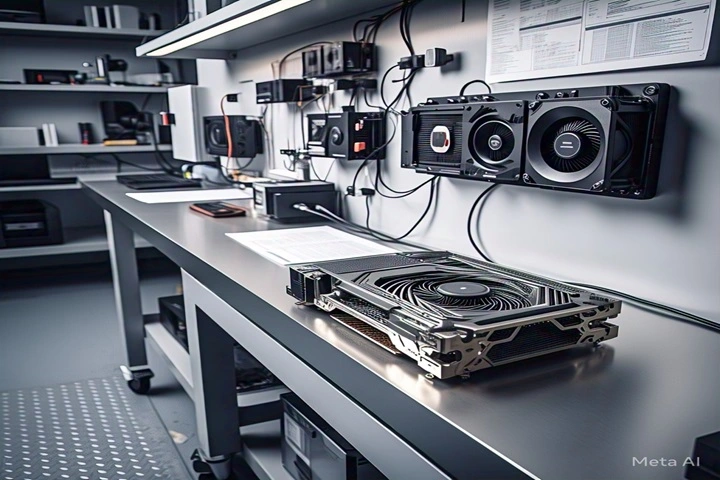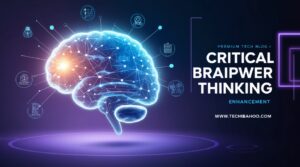What is a GPU?, Graphics Processing Units (GPUs) have become one of the most crucial components in modern computing.
Whether you’re playing the latest video games, working on complex machine learning (ML) models, or editing high-definition videos, GPUs are the hidden workhorses that make all of this possible. But what exactly is a GPU, and how does it play such an important role in today’s tech landscape?
In this article, we’ll dive deep into the world of GPUs and explore their evolution, how they work, and their significance in various industries.
Introduction: Understanding the GPU
A Graphics Processing Unit (GPU) is a specialized electronic circuit designed to accelerate the creation of images, videos, and animations by rapidly performing mathematical calculations. Over the years, GPUs have evolved beyond their initial role in graphics rendering and are now used for a variety of compute-intensive tasks, including machine learning, artificial intelligence (AI), and even cryptocurrency mining.
Modern GPUs are powerful processors capable of handling complex calculations needed for tasks like 3D graphics rendering, deep learning model training, and running simulations. With the rise of high-performance computing (HPC) and the increasing need for fast video editing acceleration, GPUs are becoming indispensable in fields that demand massive parallel computing power.
What is a GPU?
Definition: The Graphics Processing Unit (GPU)
A GPU is an electronic circuit that processes data at high speed, specifically designed to handle the complex calculations required for creating high-quality graphics rendering. While it was originally developed for video games and computer-aided design (CAD), GPUs now power a variety of compute-intensive tasks, from deep learning to blockchain technology.
Origins and Evolution of the GPU
The concept of a GPU dates back to the early 1990s, when the first hardware was designed to accelerate the rendering of 2D and 3D graphics. Before GPUs, PCs relied on the central processing unit (CPU) to handle both computing tasks and graphics, which often resulted in slower performance. As gaming and graphics-intensive applications became more complex, a dedicated processing unit, the GPU, was introduced.
In 1999, Nvidia released the GeForce 256, the world’s first true GPU, which integrated 3D rendering, transformation, and lighting onto a single chip. This development marked the beginning of the GPU’s evolution into a powerhouse capable of handling compute-intensive tasks. Over the years, GPUs have become more programmable and versatile, enabling their use in areas like AI, ML, and cloud-based GPU services.
The Role of GPUs in Modern Technology
Today, GPUs are essential in modern PCs, workstations, and even AI supercomputers. They enable fast parallel processing and high-speed calculations, allowing computers to perform tasks much faster than traditional CPUs. With applications ranging from gaming graphics to video editing performance, GPUs are now a critical part of industries such as scientific research, 3D rendering, and content creation.
What Does a GPU Do?
Graphics Rendering
The primary function of a GPU is graphics rendering. Whether you’re playing a game, watching a video, or working on 3D animations, a GPU works tirelessly to process the visuals and render them smoothly on your screen. Unlike a CPU, which processes instructions one at a time, a GPU can handle multiple tasks simultaneously, thanks to its many cores designed for parallel computing.
This parallel processing ability makes GPUs ideal for rendering high-quality 3D graphics and videos in real-time. Ray tracing, a technique that simulates how light interacts with objects, has also become a key feature in modern gaming graphics and visual effects, thanks to the powerful capabilities of modern GPUs.
Parallel Processing
Parallel processing is one of the key reasons why GPUs are so effective. While CPUs are designed for sequential processing, meaning they perform one task at a time, GPUs are designed to handle multiple tasks at once. This makes GPUs ideal for applications like machine learning and artificial intelligence (AI), where large datasets need to be processed in parallel to speed up computations.
In machine learning (ML) and deep learning, GPUs are used to accelerate the training of neural networks. They allow AI models to process data more quickly, improving the speed and accuracy of AI applications. This ability to handle massive parallel workloads is one of the reasons GPUs have become so important in the field of AI.
Acceleration of Specific Tasks
In addition to graphics rendering, GPUs are used to accelerate other tasks such as video editing, cryptocurrency mining, and scientific simulations. For instance, in video editing, GPUs can significantly speed up the rendering of high-definition videos, reducing the time it takes to produce professional-quality content. Similarly, in cryptocurrency mining, GPUs are used to perform the complex calculations required for proof of work algorithms, which are critical to verifying transactions on the blockchain.
GPU vs. Graphics Card: What’s the Difference?
Many people often use the terms GPU and graphics card interchangeably, but there is a subtle difference between the two. The GPU is the processor itself, responsible for handling graphics rendering and parallel processing tasks. On the other hand, a graphics card is the full hardware package that houses the GPU, along with memory, cooling systems, and connectors like HDMI or DisplayPort.
In other words, the GPU is the brain of the graphics card, which is the physical component that connects to the motherboard. The graphics card contains all the components needed to support the GPU in its task of rendering high-quality graphics.
GPU and CPU: Working Together
Key Differences
While both the CPU and GPU are essential components of modern computing systems, they serve different purposes. The CPU is the central unit that handles general-purpose tasks like running operating systems and managing input/output operations. It excels at sequential processing, handling tasks one at a time.
In contrast, the GPU is specialized for parallel processing. It’s designed to handle tasks that require simultaneous computations, like rendering 3D graphics or processing machine learning models. GPUs work in tandem with CPUs, with the CPU handling general tasks and the GPU accelerating compute-intensive tasks.
How They Complement Each Other
In a modern computing system, the CPU and GPU work together to handle different workloads. For example, in gaming, the CPU manages the overall game logic and controls, while the GPU takes care of rendering the complex graphics and running the simulations required to deliver a seamless gaming experience. Similarly, in AI applications, the CPU manages the data processing pipeline, while the GPU accelerates the actual machine learning and deep learning computations.
Why Are GPUs Important?
Increasing Demand in Gaming
The gaming industry has long been a driving force behind GPU technology. As games become more complex and demand higher-quality visuals, GPUs are becoming increasingly essential. Technologies like ray tracing and 4K resolution require powerful graphics cards to deliver a smooth, immersive experience.
Role in AI and Machine Learning
GPUs are also playing a key role in the rise of AI and machine learning. Their ability to perform parallel processing makes them perfect for training AI models and running deep learning algorithms. Tensor cores, specialized units within modern GPUs, are designed specifically to speed up AI acceleration and machine learning tasks.
Professional and Industrial Applications
Beyond gaming and AI, GPUs are also widely used in industries such as video production, scientific research, and CAD. In video editing, GPU acceleration enables faster rendering and real-time video processing. In scientific simulations, GPUs are used to model complex systems, such as fluid dynamics, molecular interactions, and astrophysical phenomena.
The Different Types of GPUs
Discrete GPUs
Discrete GPUs are standalone units that offer high performance for demanding tasks like gaming, 3D rendering, and scientific simulations. These GPUs come on separate graphics cards that can be inserted into a PCIe slot on the motherboard.
Integrated GPUs
Integrated GPUs (iGPUs) are built directly into the CPU or motherboard and share system memory. They are ideal for budget systems or laptops that don’t require high-end graphics rendering but still need decent performance for everyday tasks.
Virtual GPUs (vGPUs)
Virtual GPUs (vGPUs) are software-based GPUs that allow multiple users to share a single physical GPU in a cloud or virtualized environment. This is especially useful in cloud computing services, where users can access scalable GPU solutions without needing dedicated hardware.
What is a Cloud GPU?
Cloud-based GPU services are changing the way companies access GPU resources. Instead of investing in expensive hardware, businesses can rent GPU power from cloud providers like AWS, Google Cloud, and Microsoft Azure. This model offers on-demand GPU access, making it easier and more cost-effective for companies to scale their AI applications, machine learning models, and high-performance computing (HPC) tasks.
Achieving AI-readiness with Hybrid Cloud
With the growing demand for AI and machine learning, many businesses are turning to hybrid cloud infrastructures that combine on-premise GPUs with cloud GPU solutions. This allows companies to scale their AI workloads and run deep learning models more efficiently, ensuring they can meet the increasing computational demands of the future.
Modern GPU Use Cases
In addition to gaming and AI, GPUs are used in a wide range of applications, including cryptocurrency mining, scientific research, and content creation. GPUs have revolutionized video rendering speed, 3D graphics processing, and simulation by providing faster, more efficient solutions for these complex tasks.
What Are GPU Benchmarks?
GPU benchmarks are tools used to measure the performance of a GPU under various conditions. They help users assess GPU performance, including frame rates, processing power, and thermal performance, which are essential factors for tasks like gaming, video editing, and scientific computing.
GPUs vs. NPUs vs. FPGAs
In the world of AI and machine learning, GPUs, NPUs (Neural Processing Units), and FPGAs (Field-Programmable Gate Arrays) are all specialized processors. Each has its strengths depending on the application. NPUs excel at AI acceleration, while FPGAs are designed for low-latency tasks. GPUs, on the other hand, are versatile and can handle a wide range of compute-intensive tasks.
FAQ’s
Q. What is the difference between a GPU and a CPU?
A. A GPU handles parallel processing tasks, while a CPU performs sequential tasks and manages general-purpose computing operations.
Q. Can a GPU be used for tasks other than gaming?
A. Yes, GPUs are also used for machine learning, video editing, cryptocurrency mining, and scientific simulations, among others.
Q. What are the benefits of cloud-based GPU services?
A. Cloud GPUs provide scalable, cost-effective access to high-performance computing without the need for expensive hardware investments.
Conclusion: The Future of GPUs in Technology
The future of GPU technology is bright, with ongoing advancements in ray tracing, AI-powered gaming, and cloud-based GPU solutions. As GPUs continue to evolve, they will power the next generation of AI supercomputers, quantum computing, and 3D rendering.
For businesses and consumers alike, choosing the right GPU depends on the intended use. Whether you need a discrete GPU for gaming or a cloud GPU for AI applications, GPUs will continue to play a crucial role in shaping the future of technology.












